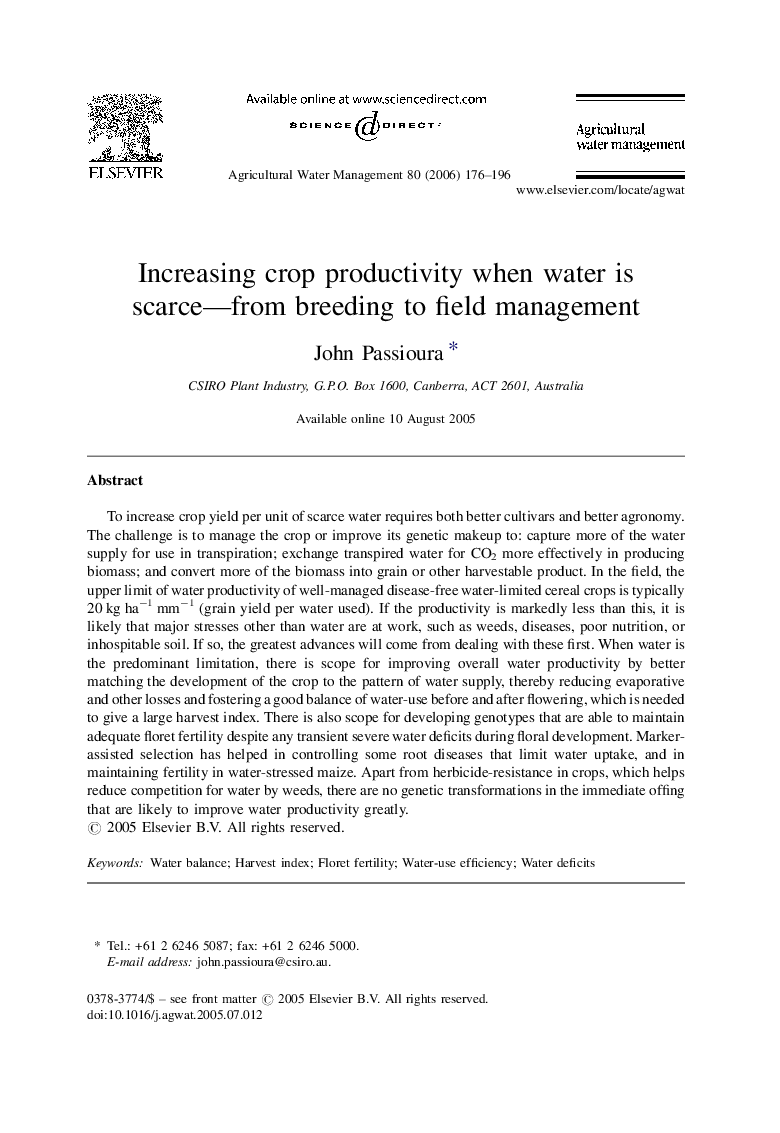| Article ID | Journal | Published Year | Pages | File Type |
|---|---|---|---|---|
| 4480734 | Agricultural Water Management | 2006 | 21 Pages |
To increase crop yield per unit of scarce water requires both better cultivars and better agronomy. The challenge is to manage the crop or improve its genetic makeup to: capture more of the water supply for use in transpiration; exchange transpired water for CO2 more effectively in producing biomass; and convert more of the biomass into grain or other harvestable product. In the field, the upper limit of water productivity of well-managed disease-free water-limited cereal crops is typically 20 kg ha−1 mm−1 (grain yield per water used). If the productivity is markedly less than this, it is likely that major stresses other than water are at work, such as weeds, diseases, poor nutrition, or inhospitable soil. If so, the greatest advances will come from dealing with these first. When water is the predominant limitation, there is scope for improving overall water productivity by better matching the development of the crop to the pattern of water supply, thereby reducing evaporative and other losses and fostering a good balance of water-use before and after flowering, which is needed to give a large harvest index. There is also scope for developing genotypes that are able to maintain adequate floret fertility despite any transient severe water deficits during floral development. Marker-assisted selection has helped in controlling some root diseases that limit water uptake, and in maintaining fertility in water-stressed maize. Apart from herbicide-resistance in crops, which helps reduce competition for water by weeds, there are no genetic transformations in the immediate offing that are likely to improve water productivity greatly.
